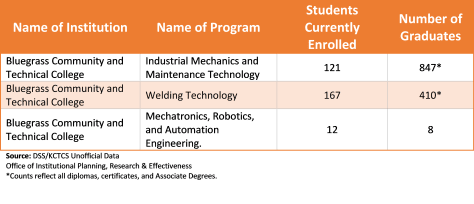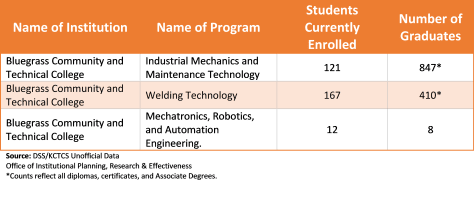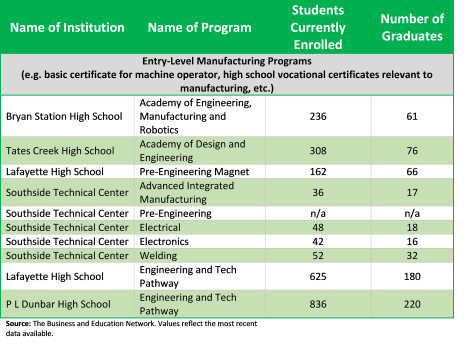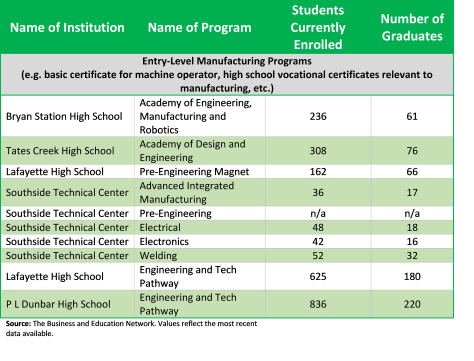Indicators of Importance: Pipelines & Post-secondary Education
With low unemployment rates, site selection consultants have become increasingly dependent upon using more granular and localized data sources to distinguish between communities competing for projects. General metrics like the percent of residents holding a bachelor’s degree or higher are useful indicators, but competitive decisions are increasingly being made using more detailed data, specifically related to labor.
Detailed data, such as enrollment and graduation rates from specific academic programs, can be used differentiate a location by demonstrating that it can provide a flow of talent with the skills demanded by the company. In Lexington’s case, ranking as the #14 city for the percent of residents with a bachelor’s degree or higher and #11 for the percent of residents with an advanced degree starts the conversation, but a current enrollment of 1,020 students and 127 recent graduates from the University of Kentucky (UK)’s Bachelor’s Degree in Mechanical Engineering program help make it the decision, particularly for a manufacturing operation.


The need for program-specific data in displaying a community’s talent pipelines doesn’t stop with 4-year degrees. According to Carol Henderson, Director of Business Incentives Practice with Cushman & Wakefield,
They’re also looking at what a community is doing to build its labor pipeline. The location team wants to know if there are training programs in place or if area community colleges are partnering with industry. Companies themselves are partnering with technical colleges and even high schools to train the workforce at a young age. Occupational skills, trade skills, more specialized skills are what companies need. Technical school enrollment is actually increasing in a lot of places. 2
Technical and community colleges represent essential pipelines of potential talent for local companies that must be effectively leveraged in today’s economic development practices. As an example, today’s manufacturing industry values indicators including current enrollment and recent graduates from programs such as Industrial Mechanics and Maintenance Technology, Welding Technology, and Mechatronics, Robotics, and Automation Engineering. Programs supplying diplomas, certificates, and Associate Degrees in technical fields are necessary elements required for their business’s long-term success. The chart below contains enrollment and graduation data from select Bluegrass Community and Technical College programs.



As Carol Henderson states, many site selectors are becoming more interested in a community’s pipelines starting in high school. In Lexington, the Business and Education Network (BEN) is a coalition connecting education and industry needs in Central Kentucky. One of the ways BEN is meeting industry needs is through the Academies of Lexington. The Academies provide students with hands-on, real-world learning experiences aligned with the needs of local industries. The Academies include partnerships with a diverse group of industries. The table below displays BEN’s most recent outcomes from the manufacturing and engineering Academies, along with other local, youth programs.



In the presence of low unemployment and increasing availability of economic data, economic developers are tasked with finding the detailed, local data that site selectors seek and businesses deem essential to their success. In regard to labor, these indicators need to demonstrate a steady flow of talent with the skills necessary to do the job. Communities, more than ever, must demonstrate their proficiency by promoting detailed, postsecondary, education data and other pipeline performance measures.
